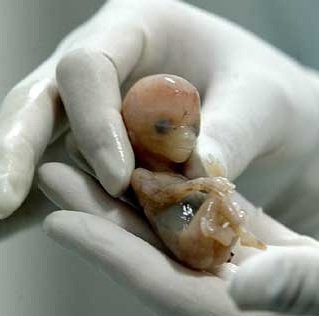 New Health Guide
New Health Guide
Baby dead in womb is normally either due to a miscarriage or stillbirth. This is usually defined by the time of such an occurrence in the course of pregnancy. According to National Institute of Child Health and Human Development (NICHHD), as reported by Eunice Kennedy Shriver, about 0.5% of all pregnancies in America end up being stillbirths. On the other hand, miscarriages constitute about 15% of the pregnancies recorded in the United States. These occurrences are usually tragic and emotionally painful for the parents who have anxiously waited for the delivery of a child.

Stillbirth normally happens as a result of the fetus dying in the first 20 weeks of pregnancy. In every 160 pregnancies, 1 stillbirth is likely to occur. Most of these stillbirths take place prior to labor pains. The pregnant woman could suspect that all is not well if the fetus drastically stops making movements and kicking around. Very few stillbirths occur during delivery and labor time.
Stillbirth has various causes. In a number of the occurrences, the death cause is never known, even after investigation. Again, it could be a result of various reasons. Therefore, stillbirth could be a result of the following:
A miscarriage is usually the loss of the conceived baby from the time of a missed period all the way to 24 weeks during the pregnancy. They can either be early or late where an early one could be within the first 12 weeks, while any other that happens after those 12 weeks is known as a late miscarriage. In most cases, miscarriage happens within the first 12 weeks of a pregnancy. The early losses of a pregnancy are encountered by women who did not know whether they were pregnant and just assume that the bleeding is the normal monthly periods.
Some women can know about a baby dead in wombwhen there is quietness and lack of movements. Others may experience an intuitive sense of death or danger. You can also sense something out of order and the caregiver can advise you go for a check up to assess the situation.
How do I know if my baby is alive inside me?Contact your doctor if you feel something is not right or when the baby stops making the usual movements. Make this quick so that the heartbeat of the baby can be checked. Get someone you can trust and feel safe with to accompany you, especially your partner.
Usually, CTG or Doppler machine is used to establish the heartbeat of the baby. This provides an audible readout that can be heard. Your healthcare provider will possibly try it out for some time to locate the heartbeat of the baby, in case the baby is not in a good position. If there is no heartbeat that can be traced, what follows is an ultrasound to ascertain the baby’s welfare.
In some cases, women are required to deliver without any delay due to medical reasons. However, others could be permitted to wait for some time to make preparation for the delivery or allow labor pains to start on their own. In the course of this time, the care provider follows them closely to ensure no infection attacks or blood clotting issues arise.
For most women, they choose to induce the labor the moment they realize they have baby dead in womb.This is a process carried out under general or local anesthesia.
Some stillbirths can be safely prevented while others can be somewhat difficult. However, there are certain things that can be exercised to reduce the risk involved.
An increased body weight puts you at a risk of losing your baby through stillbirth. Therefore, it is always advisable to protect yourself and the welfare of your baby by losing weight before getting pregnant. If you are already obese when you get pregnant, your care giver will recommend that you improve your health during pregnancy. You will be advised to eat well and do exercises such as swimming and walking. All these activities should be done at the advice of the midwife.
In between the 16 and 20 weeks of pregnancy, some baby movements can be felt. However, some can delay a bit. These could be felt as a flutter, roll, kick or swish. Movements normally increase up to 32 weeks and keep the rate almost the same. The movement type may, however, change towards the due delivery date. Your baby should continue moving all the way to the labor period and during that time as well. When your baby starts to move in an unusual manner, it is an indication that the baby is not well. If that happens, contact your doctor or the local healthcare unit soon for the welfare of your baby to be assessed.
Don’t eat certain foods. For instance, avoid some types of cheese (such as Brie, feta and blue cheese) or fish (such as swordfish, tilefish, shark, etc.) and you should ensure that all poultry and meat is thoroughly cooked.
It is important to regularly attend your antenatal clinic for appointments for your baby to be monitored as it develops. The midwife will check the growth and position of your baby. You will also get tests that include blood pressure and tests on your urine. There are used to determine the likelihood of any health conditions or illnesses like pre-eclampsia, which could lead to complications for either your baby or yourself. Any useful treatment can be offered immediately and effectively.